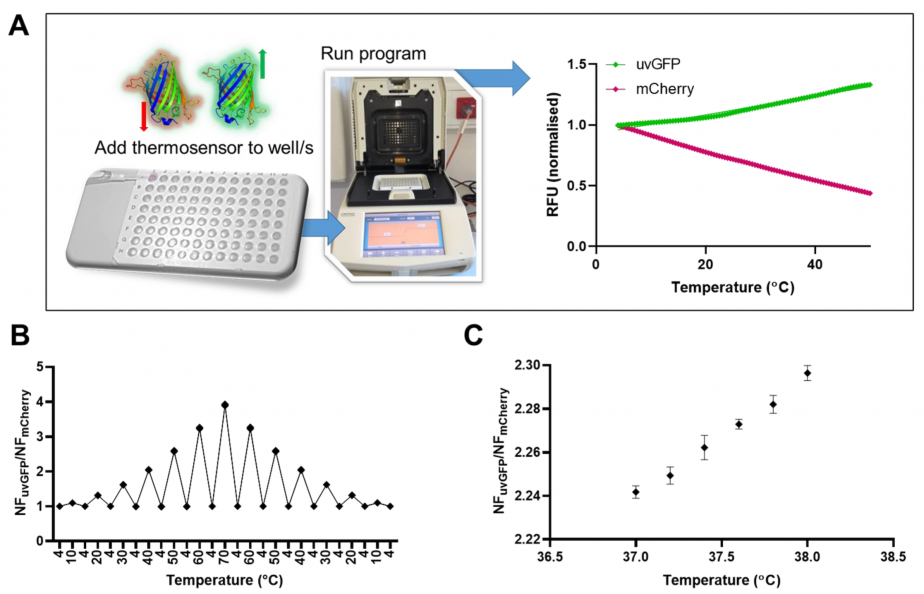Media Releases
From jellyfish and corals to a molecular thermometer

James Cook University researchers have developed a miniature, environmentally friendly thermometer by combining proteins from a coral and a jellyfish.
Associate Professor Patrick Schaeffer and Dr Alanna Sorenson combined a green fluorescent protein taken from the Aequorea victoria jellyfish, known as GFP, and a red fluorescent protein from a mushroom coral, known as mCherry, creating a more accurate molecular thermometer.
While molecular thermometers are already in development to monitor temperature in chemical and biological processes, heating devices and even living cells, JCU’s device has produced far greater accuracy thanks to the combination of the GFP and mCherry proteins.
“Previously, researchers have used other fluorescent molecules as molecular thermometers but these are less sensitive or error-prone,” said Associate Prof Schaeffer.
“This process is sensitive to heat and can reproducibly be measured.”
Shining light of certain wavelengths at GFP and mCherry proteins causes them to fluoresce.
“To find out whether these two proteins could be developed into a miniature optical thermometer, we measured the change in fluorescence of these proteins at different temperatures between 4°C and 70°C,” Associate Prof Schaeffer said.
“We found with this technique we could make measurements to within an accuracy of 0.1°C.”
Dr Sorensen said as one protein increased in its fluorescence, the other decreased, producing a specific ratio between the two that is used to determine the temperature.
“People have used these proteins individually for temperature sensing but it’s new to combine them – and particularly a first to have proteins with opposite responses to temperature,” she said.
“The proteins in the solution themselves form the thermometer – it’s a liquid currently but they could be suspended within gels potentially.
“The volume can be as small as the lowest detectable by the instrument measuring the fluorescence output. But there are newer microfluidics-based instruments where the volume is in the nanolitre range that would benefit from our environmentally-friendly molecular temperature sensor.”
No jellyfish or corals were harmed in the process of developing the thermometer.
The findings were published in Biosensors journal in the article “Real-Time Temperature Sensing Using a Ratiometric Dual Fluorescent Protein Biosensor” and can be found at the following link: https://www.mdpi.com/2079-6374/13/3/338
Media enquiries: michael.serenc@jcu.edu.au